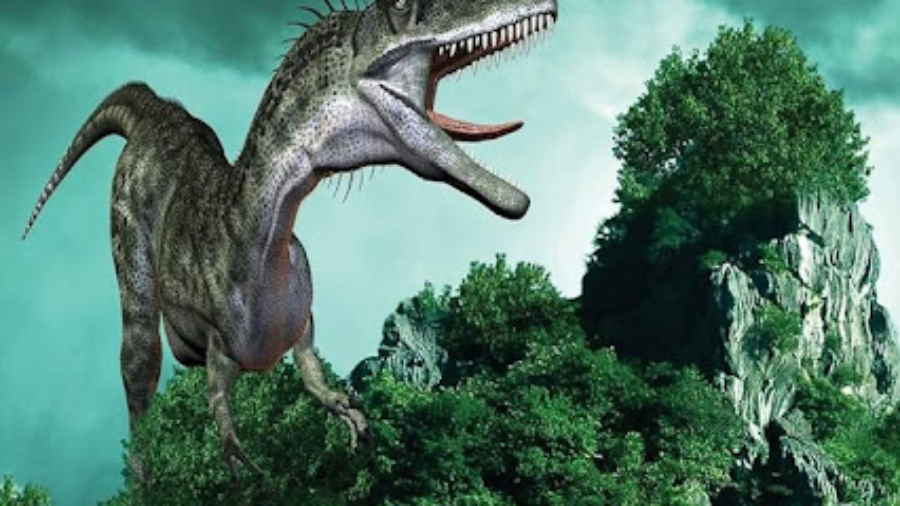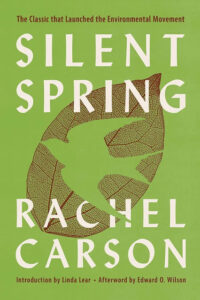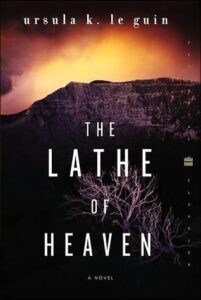Whispers of the Wild: Echoes of Nature in Stories Across Time
The Lost World
In Arthur Conan Doyle’s “The Lost World,” Professor George Edward Challenger, a red hot and erratic scientist, drives a campaign to the Amazon rainforest looking for a level supposed to hold onto ancient animals. Joined by the suspicious writer Edward Malone, the youthful and athletic Teacher Summerlee, and the clever wayfarer Ruler Roxton, Challenger sets out on an exhilarating and perilous excursion.
Confronting slippery scenes, antagonistic native clans, and destructive ancient hunters like pterosaurs, dinosaurs, and primate men, the pilgrims battle to get by and demonstrate Challenger’s disputable hypotheses. As they dig further into the lost world, they ponder past creative minds, seeing the basic battle for presence in this disconnected biological system immaculate by time.
Their disclosures challenge logical comprehension and flash public discussion, yet in addition, bring up moral issues about upsetting the sensitive equilibrium of this secret world. Loaded with exciting experiences, logical miracles, and philosophical reflections, “The Lost World” is an immortal example that keeps on spellbinding perusers with its dazzling mix of sci-fi and investigation.
Review :
Arthur Conan Doyle’s The Lost World: A Completely Exhilarating Excursion to an Ancient Past
The Lost World by Arthur Conan Doyle: Over a century after it was first published in 1912, Arthur Conan Doyle’s The Lost World remains a timeless adventure classic that continues to captivate readers. The original welcomes us on an endeavor to a secret level in the Amazon Bowl, where ancient animals like dinosaurs and pterosaurs wander.
A Convincing Story with Dynamic Characters:
Doyle stunningly creates a story that is both invigorating and intriguing. The narrative is told through the eyes of the expedition’s leader, Professor Challenger, a flamboyant and contentious paleontologist. Close by him is a diverse group of characters, each with interesting inspirations and characters. This powerful blend makes a charming exchange, adding profundity and humor to the story.
Striking Portrayals and Exciting Experiences:
Doyle’s striking portrayals rejuvenate the lost world. We feel the severe intensity of the wilderness, the tricky move up the level, and the dazzling sight of dinosaurs touching in a primitive scene. The experiences with these ancient animals are exciting and intense, leaving you as eager and anxious as ever.
Something Beyond an Undertaking:
While the novel is without a doubt a thrilling experience story, it likewise offers unobtrusive evaluations of imperialism, logical self-importance, and the double-dealing of nature. These subjects add profundity and aspect to the story, making it something other than a straightforward break into a fantastical world.
A Heritage that Perseveres:
The Lost World has unquestionably influenced popular culture. It roused various variations, including films, network shows, and even computer games. It is undeniable that it had an impact on the science fiction and adventure genres, making it a significant piece of literature.
Overall:
The Lost World is an exhilarating experience story with an immortal allure. It joins dazzling characters, striking depictions, and interesting subjects to make a remarkable understanding encounter. Whether you seriously love dinosaurs, experience stories, or essentially appreciate elegantly composed fiction, this novel is certain to enthrall you.
Recommend.
Silent Spring: An Outline
Distributed in 1962, Silent Spring by Rachel Carson touched off an upset in ecological mindfulness. The book recorded the staggering impacts of pesticides, especially DDT, on the environment and human well-being.
Carson’s fastidious examination and persuasive composing uncovered the inescapable harm brought about by these synthetic substances, including:
Declining bird populaces:
Birds were especially powerless against DDT, which aggregated in their bodies and caused eggshells to diminish, prompting regenerative disappointment.
Harming of natural life:
DDT and different pesticides polluted the climate, hurting different creature species, from bugs to warm-blooded animals.
Human well-being gambles: The book raised worries about the possible risks of pesticides to human well-being, including connections to malignant growth and different Silent Spring was met with wild resistance from the compound business, however, it resounded profoundly with general society. The modern environmental movement was sparked by the book’s persuasive arguments and vivid descriptions of a “silent spring” devoid of bird song.
The book’s effect was significant:
Expanded public mindfulness: Silent Spring ignited broad public worry about natural contamination and the risks of pesticides.
Strategy changes: The book plays a huge part in the forbidding of DDT in the US and different nations.
Birth of the natural development:
Silent Spring is viewed as a foundation of cutting-edge ecological development, moving incalculable people and associations to battle for natural security.
Today, Silent Spring remains a milestone work and a strong sign of the requirement for dependable ecological stewardship. Its message of interconnectedness and the significance of safeguarding our regular world keeps on resounding with perusers all over the planet
Silent Spring: A Review
Silent Spring: A Survey Silent Spring by Rachel Carson, distributed in 1962, is a milestone book throughout the entire existence of environmentalism. It is credited with launching the modern environmental movement and documenting the devastating effects of pesticides, particularly DDT, on the natural world.
Rachel Carson, a marine biologist, diligently investigated the scientific evidence linking DDT to the decline of bird populations, insect life, and other ecological disruptions. She made the book accessible to a wide range of people by presenting her findings in a clear, compelling, and frequently poetic manner.
Effect and Importance:
Public Mindfulness: Silent Spring raised public mindfulness about the risks of pesticides and the significance of natural insurance. It ignited a public discussion about the utilization of synthetics and prompted the forbidding of DDT in the US in 1972.
Environmentalists in power: The book had an impact far beyond the pesticide issue. It assisted with motivating an age of natural activists and prompted the production of various ecological associations.
Logical Exploration:
Silent Spring empowered further logical investigation into the natural impacts of synthetic compounds and different contaminations. It is considered a primary text in the field of natural science.
Key Topics:
Nature’s interconnectedness:
Carson contends that the harm we inflict on one component of the ecosystem ultimately affects us all and that all living things are interconnected.
The risks of unrestrained mechanical advancement: Carson cautions against the risks of depending entirely on innovation to tackle natural issues. She requires a more all-encompassing methodology that regards the normal world.
Overall:
Silent Spring is a strong and significant book that stays important today. Anyone interested in science, environmentalism, or the history of our relationship with the natural world should read it.
Extra Notes:
The book was met with wild resistance from the synthetic business, which attempted to dishonor Carson and her work.
Despite the difficulties, Silent Spring significantly affected popular assessment and strategy.
The book is viewed as one of the most powerful natural books at any point composed.
The Lathe of Heaven 1971 by Ursula K. Le Guin
George Orr, an upset man tormented by distinctive dreams, looks for help from Dr. Haber, a psychotherapist. George’s fantasies, in any case, are no common dreams. They have a bizarre ability to change reality. As George dozes, his general surroundings shift as indicated by the substance of his fantasies.
At first ignorant about his capacity, George’s fantasies make destruction. The world is transformed into a utopia of peace and harmony by a single dream, but this comes at the expense of individual creativity and thought. The world is thrown into a dystopian nightmare filled with ice and desolation by another dream.
George’s power attracts Dr. Haber, who wants to use it for his gain. He controls George’s fantasies, wanting to make a world that suits his vision. Nonetheless, the outcomes are eccentric and perilous. George, trapped in the snare of control, battles to track down command over his psyche and the destiny of the world.
The Lathe of Heaven investigates the intricate connection between dre
ams and reality, the force of individual cognizance, and the risks of controlling reality for individual addition. It brings up issues about the idea of freedom of thought, the obligation of forming our reality, and the likely results of unrestrained power.
Themes:
The influence of dreams: The novel investigates the possibility that fantasies can be something other than inventions of our creative minds. They can hold the ability to shape reality.
Individual obligation: George’s capacity compels him to go up against the results of his activities, in any event, when they happen while he is sleeping.
Manipulation and control: Dr. Haber’s endeavors to take advantage of George’s power feature the risks of uncontrolled aspiration and control.
Will power: The clever brings up issues about the idea of unrestrained choice and whether we are really in charge of our predeterminations.
The idea of the real world: We are challenged in our understanding of what is real and what is not by the shifting landscapes of George’s dreams.
Impact:
The science fiction novel The Lathe of Heaven is considered a classic. It has been applauded for its intriguing topics, its investigation of human brain science, and its strong narration. The novel has won various honors, including the Locus Grant for Best Novel in 1972. It keeps on reverberating with perusers today, offering a useful example of the risks of unrestrained power and the significance of individual obligation
Review
The Lathe of Heaven: A Captivating Look at Dream Power and Responsibility The 1971 science fiction novel The Lathe of Heaven by Ursula K. Le Guin is a dreamlike look at dream power and responsibility. George Orr, a troubled man who discovers that his dreams can alter reality, is the protagonist of the story.
At the point when George longs for a world without struggle, he awakens to find that his fantasy has become reality – yet with potentially negative results. Although the world he created appears to be a utopia, it lacks diversity and freedom. This brings up significant issues about the morals of influencing the world through dreams and the likely risks of uncontrolled power.
Le Guin’s composition is clear, brief, and provocative. She unbelievably winds together subjects of brain research, reasoning, and social editorial into a convincing story. The characters are advanced and appealing, and the story is loaded with snapshots of both magnificence and anticipation.
Here are a portion of the vital qualities of The Lathe of Heaven:
One of a kind and provocative reason: The possibility that fantasies can change the truth is a captivating one, and Le Guin investigates it with profundity and subtlety.
Attractive characters: George Orr is a complicated and thoughtful hero, and the supporting characters are advanced and locked in.
Prose that is beautifully written: Le Guin’s composing is clear, compact, and wonderful.
Investigation of significant topics: The novel brings up significant issues about the idea of the real world, the morals of force, and the obligation that accompanies it.
Persevering through importance: Despite being written in 1971, the original’s topics are still important today.Generally, The Lathe of Heaven is a mind-blowing work of sci-fi that is both engaging and provocative. Anyone who enjoys a good story with something to say and fans of the genre should read it.
Consider the following additional points:
The Novel has been adapted into two movies, a TV film, and a radio play.It has won various honors, including the Locus Award for Best Book.It is considered one of the most important works of science fiction ever written.




